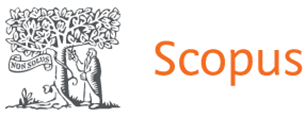Face of the Child as an Icon of the Victims of Dehumanization and Bestiality. At the Root of Pedagogical Concern for the Fate of the Child and the Endangered Identity of Children in a Situation of Wartime Aggression and Confrontation of Ethno-Cultural...
DOI:
https://doi.org/10.15330/jpnu.10.3.61-74Keywords:
Face of the Child as an icon of victims of dehumanisation and bestiality, fate of children of war, suffering of children, child abduction, National Day of Polish Children of War, National Day of Ukrainian Children of WarAbstract
The word “child” and the images depicting children and childhood in the context of acts of aggression, war and crime, in a situation of immense suffering, vividly show the processes of dehumanisation taking place and the acts of bestiality of wartime. For pedagogy, the wartime experience of children poses a particular challenge. Pedagogy is burdened with the duty to care especially for the fate of the child experiencing the horrors of war. It is never enough to emphasise that although the issue of concern for the fate of the child in a situation of wartime aggression is imposed by reality itself, it is a reality that, as ethical sensitivity suggests, should not be. One cannot succumb to stupefaction or indifference in reading the great numbers and the ever-increasing number of children experiencing the dangers and sufferings of war. It is necessary – in a pedagogical perspective saturated with axiology and ethics – to see the Face of the Child as an icon of the victims of dehumanisation and bestiality, which appeals to the consciences of people of good will to concretise and intensify pedagogical concern for the fate of the child and for the endangered identity of children in a situation of wartime aggression and confrontation of ethno-cultural differences. The current pedagogical challenge is to move towards a pedagogically deepened reading of what is written in the wounded or scarred Face of the Child as an icon of the victims of the brutality, dehumanisation and bestiality of wartime. It is important to draw attention to the features of children as the smallest, weakest and most vulnerable people – people who are quite defenceless – in the confrontation imposed on them with the barbarity and bestiality of wartime, which is unfortunately being experienced today by Ukrainian children, and it is their faces that are becoming the icons of the victims of dehumanisation and bestiality. The fate of the children of the war poses a current research and practical challenge also in the research field of history (including the history of education and the history of care institutions). Past – but not fully researched and described – crimes against children are also repeated in the 20th and 21st centuries. Therefore, the historical recognition of, among others, the Nazi genocide of children is essential for a better understanding of the current dramatic situation of the children of war. Special attention in the article is given to Ukrainian children of war who are migrants or deported. If a National Day for Polish Children of War has been established in Poland (as a state holiday “in tribute to the Polish Children of War”), an initiative should also be taken in Ukraine to establish a “National Day for Ukrainian Children of War”. This could be a joint Ukrainian-Polish initiative of academic circles, especially educators. The second postulate includes the creation of a “Virtual Network (Centre) for Children of War Documentation and Research” as a “space” for interdisciplinary and systematic scientific debate and information exchange in cooperation between Polish, Ukrainian and other countries’ academic centres, organising cyclical scientific seminars also in connection with the National Day of Polish Children of War, seminars with both theoretical and practical orientation (e.g. on education and readaptation of children of war).











